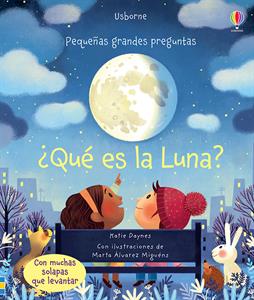In this post: A round-up of Spanish children’s books that include diverse characters.
Are you looking for diverse children’s books in Spanish?
At the heart of learning a language is nurturing an appreciation for other cultures and the diversity in our world.
Depending on where you live, this may be a challenge to live out day to day. Which is why I love how books can open conversations and act as windows for our children.
Intentionally building a diverse bookshelf allows children to see representation of cultures and ethnicities in the literature we read about our globalized world.
I love the words of Danielle Coke from Oh Happy Dani that perfection is NOT a prerequisite to participation. She says “Allyship is a journey, so don’t feel pressured to get it all right immediately!”

This post contains affiliate links. As an Amazon Associate I earn from qualifying purchases.
Start at home. We are raising up the next generation and we can positively influence that. Making our home library diverse is a great place to start.
Usborne Books & More used the analogy recently that books are mirrors and windows:
“Mirrors to see not only a reflection of ourselves but also areas where we can grow. Windows to see into the lives of others to find common ground, gain new insights, and appreciate the beauty of diversity.”
Why Diverse Books Matter
Here are 3 reasons why it’s important we intentionally grow a diverse home library:
1. Diverse books can be mirrors
All children need to see themselves represented in the books they read. We need to break down stereotypes by showing multiple facets of races, ethnicities and cultures.
We need to value diversity in fiction and non-fiction: studying historical books are important but children need to see children of color doing things they do. This dimension is key for eliminating implicit bias.
2. Diverse books can be windows
They allow children to relate with members of another group. Having diverse protagonists gives children the opportunity to see life through a different lens and normalizes differences.
3. Diverse books encourage discussion
By not discussing diversity with our children, we are in essence giving them the message that it’s a taboo topic or foreign concept. Children as young as 3 months old start to prefer the race that matches their caregivers. It’s never too early to start the discussion!

Diverse Spanish Non Fiction Books
Aquí y allá

This Kane Miller book beautifully presents the lives of many different peoples including their food, schools, how they do chores and so much more. See it here.
Ver cómo la gente de otros países compra provisiones, va a la escuela, celebra y mucho más. Explora la increíble diversidad de personas y culturas que hay en nuestro planeta.
This is such a great title for seeing how cultures are different across the globe, from discovering how other people in the world go to school, to going to the grocery store and even how they celebrate traditions.
Di Algo

Di Algo is an empowering read by Peter H. Reynolds. It explores the many ways that a single voice can make a difference.
Every day we have opportunities to advocate, with our actions, our words, and our voices. Everybody has a voice and every voice is valued.
El cuerpo humano

El cuerpo humano is a title from the PaperPie Shine a Light series. This one explores the human body through illustrations of diverse peoples beautifully.
Explora el cuerpo humano ¡y descubrirás sus secretos! Ilumina el reverso de las páginas y verás lo que ocurre debajo de nuestra piel.
¿Qué es la luna?

¿Qué es la luna? is a new title from the PaperPie series “Primeras grandes preguntas”. It’s another great example of a black protagonist asking questions like all kids do.
In this case, she is asking about the moon: Why it changes shape, how astronauts get there etc. This is a lift the flap book which makes it a great book for engagement.
Yo me pregunto las emociones

This is a beautifully illustrated book about emotions. It allows children to empathize with other characters and see examples of emotions they often feel playing out.
Diverse Spanish Fiction Books
Última parada de la calle Market

Última parada de la calle Market could really be non-fiction. It’s a beautiful story of a grandma and her grandson who, every Sunday, take the bus home to Market Street.
But on this particular day the grandson, Jackson, has many questions about why he is treated differently to the others on the bus. Why doesn’t he get to have the same privileges? But his Grandma teaches him to see the beauty that is all around them.
Lola planta un jardin

From the popular series about Lola, Lola planta un jardin is a great choice for garden lovers too. This is another great example of a black protagonist doing normal everyday things.
After Lola reads a book of garden poems, she decides she wants to plant some seeds. She gets books from the library and picks out the plants. Then Lola and her mommy prepare the soil and the gather all the supplies.
¿Por qué yo soy yo?

¿Por qué yo soy yo? is a beautiful celebration of diversity and is the perfect choice for building bridges of empathy. It tells the story of two children who are thinking and asking the very same questions, although they don’t realize it.
It conveys such an important message that this world needs connection, empathy and kindness.
Mi abuela y yo

Mi abuela y yo shows all the fun things Grandmas can do with their grandchildren. It even shows them communicating digitally via devices.
En todo el mundo, en todos los idiomas, en todos los países, lo que más les gusta a las abuelas es… ¡estar con sus nietos!
Remember, allyship is a journey! We hope this post inspires you to grow your home library gradually, but intentionally.
Keep Reading! More Related Posts:
